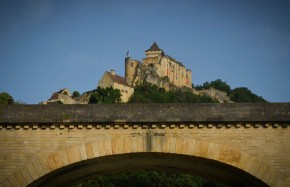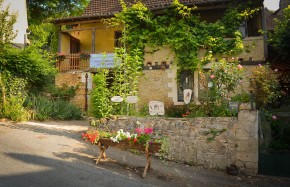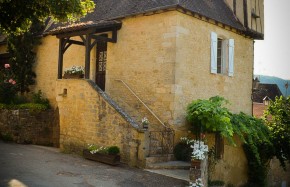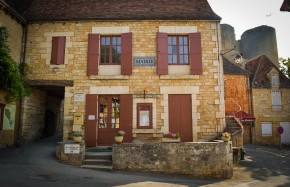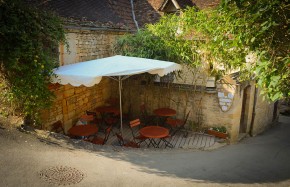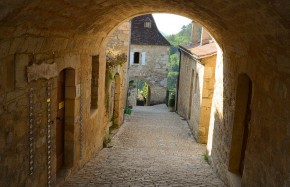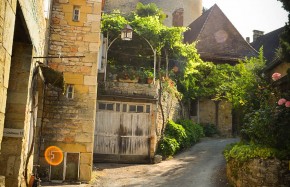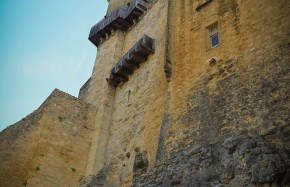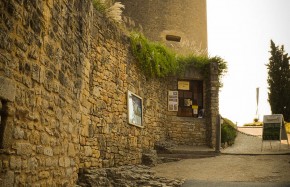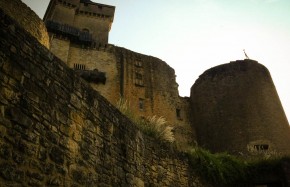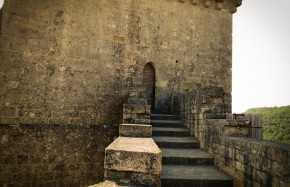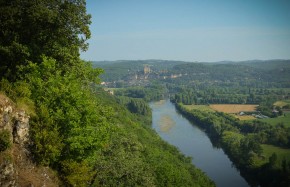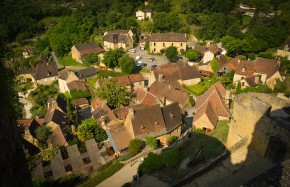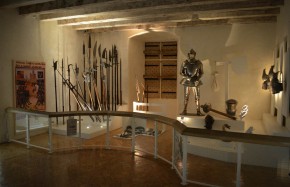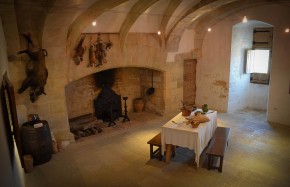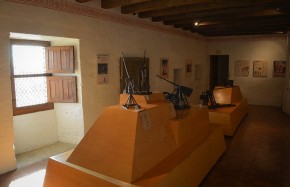Castelnaud-la-Chapelle
Within ten kilometers of Sarlat-la-Canéda and opposite the villages of Beynac-et-Cazenac and La Roque-Gageac, Castelnaud-la-Chapelle sits majestically on a hill between the confluence of the Dordogne and Céou rivers in the Aquitaine region of southwestern France. The Château de Castelnaud at the top of the hill can be seen for several miles and its strategic position is no mistake. The oldest documents date the castle to the 13th Century, when it figured in the Albigensian Crusade, a 20-year military campaign initiated by Pope Innocent III to eliminate Catharism in Languedoc in the south of France. The Cathars were a direct challenge to the Catholic Church, renouncing its practices and dismissing it outright as the Church of Satan.
The castellan who controlled the fortress was a Cather named Bernard de Casnac, who was ousted by Simon de Montfort, a French nobleman and prominent leader of the Fourth Crusade against Eastern orthodox Christians at Constantinople. Bernard retook the castle and hanged all but Montfort, who was killed shortly thereafter at the Siege of Toulouse. Montfort’s youngest son, also named Simon, eventually gained possession of the earldom of Leicester and played a major role in the reign of Henry III of England, leading the rebellion against Henry during the Second Barons’ War and subsequently becoming de facto ruler of England. During his rule, young Montfort called the first directly elected parliament in medieval Europe and is regarded today as one of the progenitors of modern parliamentary democracy. During the Hundred Years’ War, the castellans of Castelnaud owed their allegiance to the Plantagenets of England, the sieurs of Beynac across the river to the king of France. In later times, Castelnaud was abandoned bit by bit, until by the French Revolution it was a ruin. This is but a brief history of Castelnaud-la-Chapelle.
Today, the fortress is privately owned and has been superbly restored as a museum. Displays of medieval armor and weaponry abound, and outside the walls of the main tower is a small arsenal of trebuchets that are still aimed directly at Beynac. The upper village just beneath the castle is quaint, with a few shops and cafés tucked into corners along its narrow pathways. We didn’t see many tourists the morning we arrived, but shop owners were already opening their doors and placing their wares outside. If we were to shoot a film here, I got the feeling it would be an event for local residents, who seem to like to take things slowly. The lower village is modern and on the day we were there, a flea market was being casually set up along the Dordogne River. Kayaks and canoes were being readied by a rental house, waiting for adventurers who wanted to see the surrounding villages by water. I enjoyed Castelnaud-la-Chapelle and appreciate its rich history, written in the stone walls of the once mighty fortress that sits atop it.

